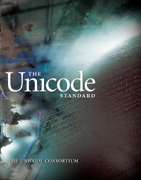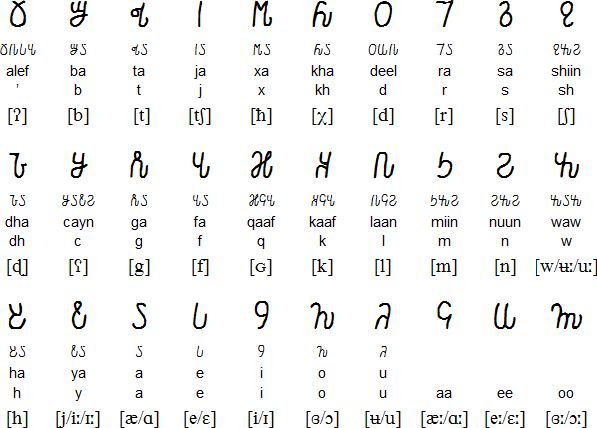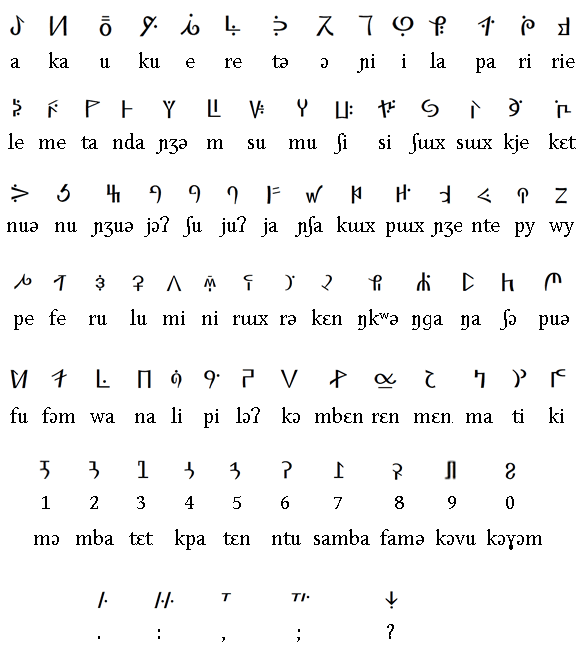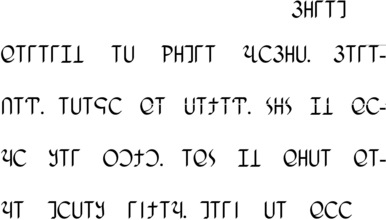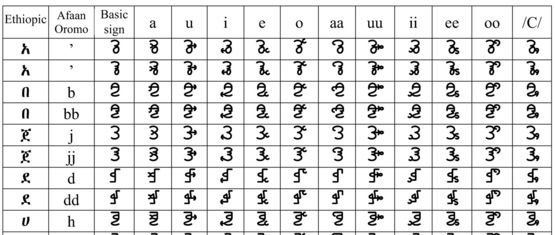Huur
Huur = Horus
What is Unicode?
no matter what the platform,
no matter what the program,
no matter what the language.
Unicode provides a unique number for every character, no matter what the platform, no matter what the program, no matter what the language. The Unicode Standard has been adopted by such industry leaders as Apple, HP, IBM, JustSystems, Microsoft, Oracle, SAP, Sun, Sybase, Unisys and many others. Unicode is required by modern standards such as XML, Java, ECMAScript (JavaScript), LDAP, CORBA 3.0, WML, etc., and is the official way to implement ISO/IEC 10646. It is supported in many operating systems, all modern browsers, and many other products. The emergence of the Unicode Standard, and the availability of tools supporting it, are among the most significant recent global software technology trends.
---------------------------------------------------------------------------------------------------------------------------------------------
Development of Fonts for African Scripts: Using Computer Technologies to Preserve Africa’s Written Heritage
Andrij Rovenchak (Ivan Franko National University of Lviv, Ukraine)
Africa is a homeland of one of the most ancient writing systems, Egyptian hieroglyphs. An ongoing competition with the Sumerian cuneiform for the oldest script will hardly have a sure winner in the nearest future but recently the evidences supporting Africa’s side were revealed (Mitchell 1999).
Today, three scripts are officially adopted in Africa: Roman, Arabic, and Ethiopic (cf. Pasch 2008). In 2003, Neo-Tifinagh (Tifinagh IRCAM) alphabet was confirmed for an official use in Morocco for the Berber (Tamazight or Amazigh) language (Mafundikwa 2004:46), upon King Mohamed VI’s decision in 2002 (IRCAM n.d.).
Figure 1: Map showing the locations of African script created in the Modern Age.
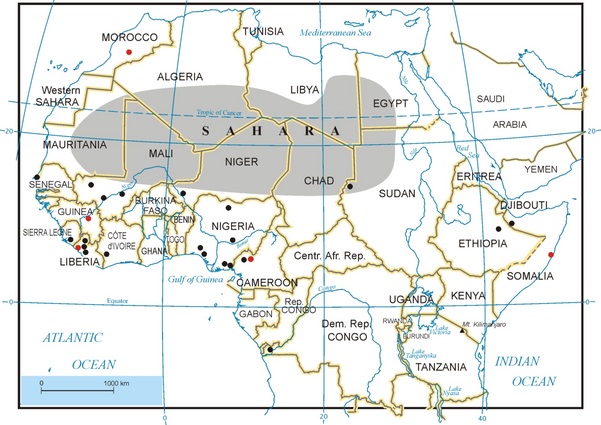
Red dots indicate the scripts already represented in Unicode, remaining black circles show the locations of other numerous indigenous African scripts.
2. Unicode
Of all the mentioned African scripts, only a few are represented in the Unicode , an international standard for text representation in the majority of the world’s writing systems. These are:
N’ko (07C0–07FF block)
N'Ko script was added to the Unicode Standard in July 2006 with the release of version 5.0.
https://en.wikipedia.org/wiki/N'Ko_alphabet
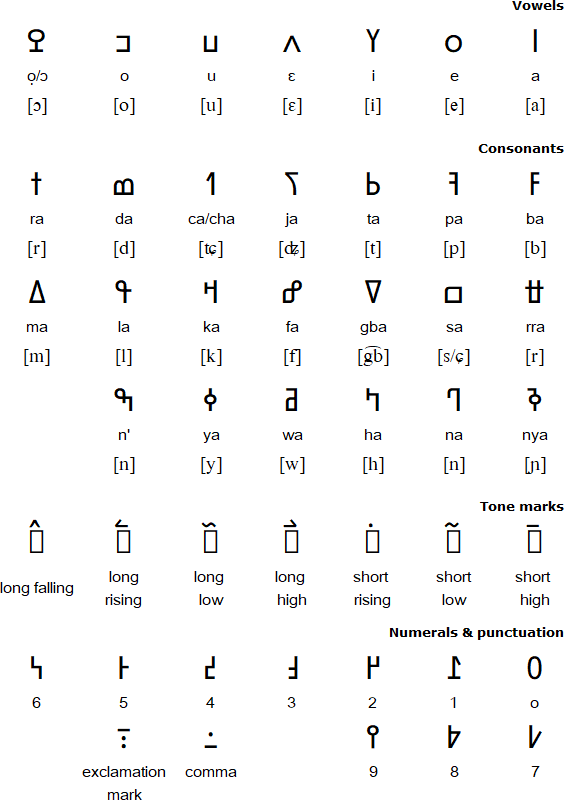
N'Ko (ߒߞߏ) is both a script devised by Solomana Kante in 1949, as a writing system for the Manding languages of West Africa, and the name of the literary language written in that script. The term N'Ko means I say in all Manding languages.
ߎߟߌߊߥ ߎߍߖߎߠ ߌߗߊߎߋߠ߫߬ ߍߊߋߵ߬ߠ߇
ߎ ߏ ߬ ߍߏߎߍߌߖߊߠߗߍߌߎߏߊߧߠߥߢ߈߃ߎ (Random Sample text)
Coptic and Nubian (2C80–2CFF block)
In Unicode, most Coptic letters formerly shared codepoints with similar Greek letters, but a disunification was accepted for version 4.1, which appeared in 2005.
The new Coptic block is U+2C80 to U+2CFF. Most fonts contained in mainstream operating systems use a distinctive Byzantine style for this block. The Greek block includes seven Coptic letters (U+03E2–U+03EF highlighted below) derived from Demotic, and these need to be included in any complete implementation of Coptic.
https://en.wikipedia.org/wiki/Coptic_alphabet
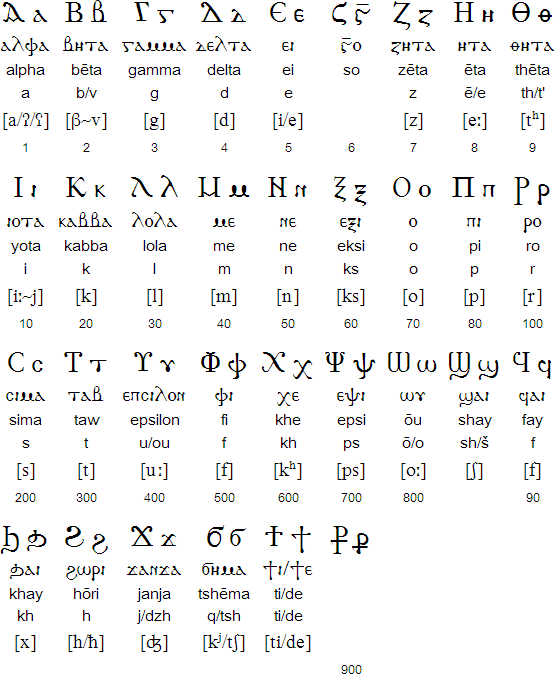
Coptic, a member of the Egyptian branch of the Afro-Asiatic language family and a descendant of the Ancient Egyptian language. Coptic was an official language in Egypt until around the 13th Century AD, when it was replaced by Arabic. Nowadays Coptic Christians all speak Arabic as their every day language, but use Coptic in their religious ceremonies.
http://www.omniglot.com/writing/coptic.htm
Article 1 of the Universal Declaration of Human Rights
ⲥⲟⲩⲙⲟⲥⲉ ⲣⲱⲙⲉ ⲛⲓⲙ ⲉⲩϣⲏϣ ⲉ ⲛⲉⲩⲉⲣⲏⲩ ϩⲛ ⲟⲩⲇⲓⲕⲁⲓⲟⲥⲩⲛⲏ. ⲟⲩⲛ ϭⲟⲙ ⲙⲙⲟⲩ ⲉⲧⲣⲉⲩⲙⲉⲉⲩⲉ ⲁⲩⲱ ϣϣⲉ ⲉⲧⲣⲉⲩⲣ-ⲙⲛⲧⲙⲁⲓⲥⲟⲛ.
Translation
All human beings are born free and equal in dignity and rights. They are endowed with reason and conscience and should act towards one another in a spirit of brotherhood.
(Article 1 of the Universal Declaration of Human Rights)
-------------------------------------------------------------------------------------------
Extended details on all the letters of the Old Nubian alphabet, especially the additional ones, can be found in this Unicode proposal by Michael Everson and Stephen Emmel.
http://std.dkuug.dk/jtc1/sc2/wg2/docs/n2744.pdf
Date:2004-04-20
Tifinagh (2D30–2D7F block)
Tifinagh was added to the Unicode Standard in March, 2005 with the release of version 4.1.
The Unicode block for Tifinagh is U+2D30–U+2D7F:
https://en.wikipedia.org/wiki/Tifinagh
A modern alphabetical derivate of the traditional script, known as Neo-Tifinagh, was introduced in the 20th century. A slightly modified version of the traditional script, called Tifinagh Ircam, is used in a number of Moroccan elementary schools in teaching the Berber language to children as well as a number of publications.
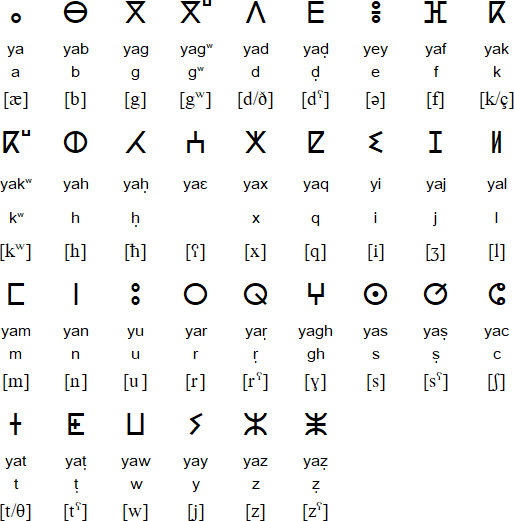

Translation
All human beings are born free and equal in dignity and rights. They are endowed with reason and conscience and should act towards one another in a spirit of brotherhood.
(Article 1 of the Universal Declaration of Human Rights)
ⵇⵙⴷⴼⵀⵓ ⴻⵇⴳⵛⴱⵇⵍⴽ ⵊⵙⴷⵢⵉⵣ ⴻⵢⵔⵍⴽⵊⵀⴷ
ⴼⵇⵊⴽⵀⴻ ⵔⵇⵉⵓⵢⵢ ⵓⵢⵇⵍ ⴽⵊⵢⵔ ⴻⵇ ⵔⴻⴷⵙⴼ (Random Sample text)
Vai (A500–A63F block)
The Vai syllabary was added to the Unicode Standard in April, 2008 with the release of version 5.1.
In Windows 7 and earlier, since this version only gives names for characters released in Unicode 5.0 and earlier, the names will either be blank (Microsoft Word applications) or "Undefined" (Character Map).
https://en.wikipedia.org/wiki/Vai_syllabary
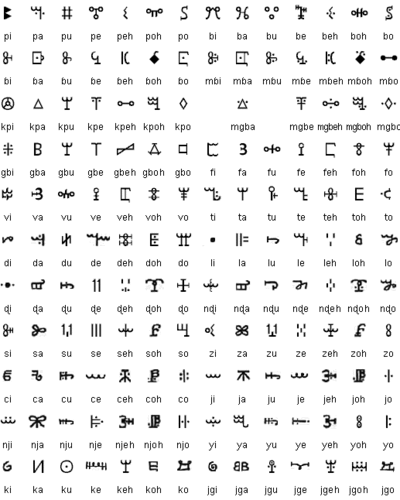
Sources
The primary sources for the Vai characters in the character set proposed are the 1962 Vai
Standard Syllabary...
...Klingenheben’s involvement culminated with a
conference held at the University of Liberia in 1962 to standardize the script for modern usage;
the team of Vai scholars he worked with included Fatima Massaquoi Fahnbulleh, Zuke
Kandakai, S. Jangaba Johnson, and Bai Tamia Moore, among others.
Texts produced over the course of the 20th century included a manuscript of 180 pages in
length in diary form, containing a number of clan histories, translations of selections from the
gospels and the Qur’an, folktales and short stories, and page-long summaries included in local
newsletters. This script remains in use today, particularly among Vai merchants and traders.
In addition to its presence in commerce, there is a growing body of literature published in Vai. The
Bible Society in Liberia has recently published a New Testament and the Institute of Liberian
Languages has published several compilations of folktales and history.
http://std.dkuug.dk/jtc1/sc2/wg2/docs/n2948.pdf
Participants in Vai script standardization seminar, University of Liberia, 1962
Moore, Bai T., Writer; Johnson, S. Jangaba; Klingenheben, August, University of Hamburg; Massaquoi-Fahnbulleh, Fatima, University of Liberia; Kandakai, Zuke, Scholar of Vai Studies
http://webapp1.dlib.indiana.edu/ima...dlib.indiana.edu/iudl/lcp/tubman/VAA7927-2461


http://www.christusrex.org/www1/pater/JPN-vai.html
(Part 1)

